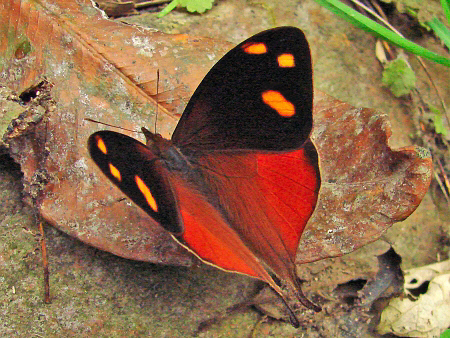
Introduction
There are 1100 known species of Satyrinae in the neotropical region. About 570 of these are placed in the subtribe Pronophilina – a diverse group of high altitude cloudforest butterflies, all of which are confined to the neotropical region. The vast majority are found only in the Andes, but 4 species are known from the Atlantic cloudforests of Brazil, and there are a further 6 species that are endemic to Guatemala, Costa Rica or Mexico. More oddly there is one genus Calisto that is found exclusively on the Caribbean islands of Cuba and Hispaniola.
The genus Corades comprises of 23 described species, all denizens of the neotropical cloudforests. The butterflies are easily recognisable by their large size and very distinctively shaped hindwings. The pattern on the underside varies according to species. Many such as iduna, cybele and medeba are a unicolorous brown, peppered and striated with grey and black, while others including ulema, cystene and chirone are beautifully marbled or banded with cream.
Corades chelonis is one of the most beautiful of the genus. Corades pax is very similar but has an additional orange spot at the tornus of the forewing.
Both species occur from Colombia and Venezuela to Peru.
Habitats
This species inhabits cloudforests at elevations between about 2200-3000m.
Lifecycle
The lifecycle appears to be unrecorded. The following generalisations are applicable to the subtribe Pronophilina and are probably applicable to Corades: The eggs are round, white or pale greenish white, and laid singly on the foodplants or on surrounding vegetation. The larvae are typically pale brown, marked along the back and sides with narrow dark stripes, and tapering towards each end. The head is large in proportion to the body and has two short forward-pointing horns. The tip of the abdomen is equipped with a pair of caudal prongs which are used to flick the frass away from the feeding area. The larvae of all known Pronophilina feed on Chusquea – a genus of bamboo which grows in thickets, mainly along the courses of streams.
Adult behaviour
The butterflies are encountered singly, usually observed at rest on foliage at a height of about 2-3 metres above ground level. They also imbibe dissolved organic substances from decomposing vegetation on the forest floor.
